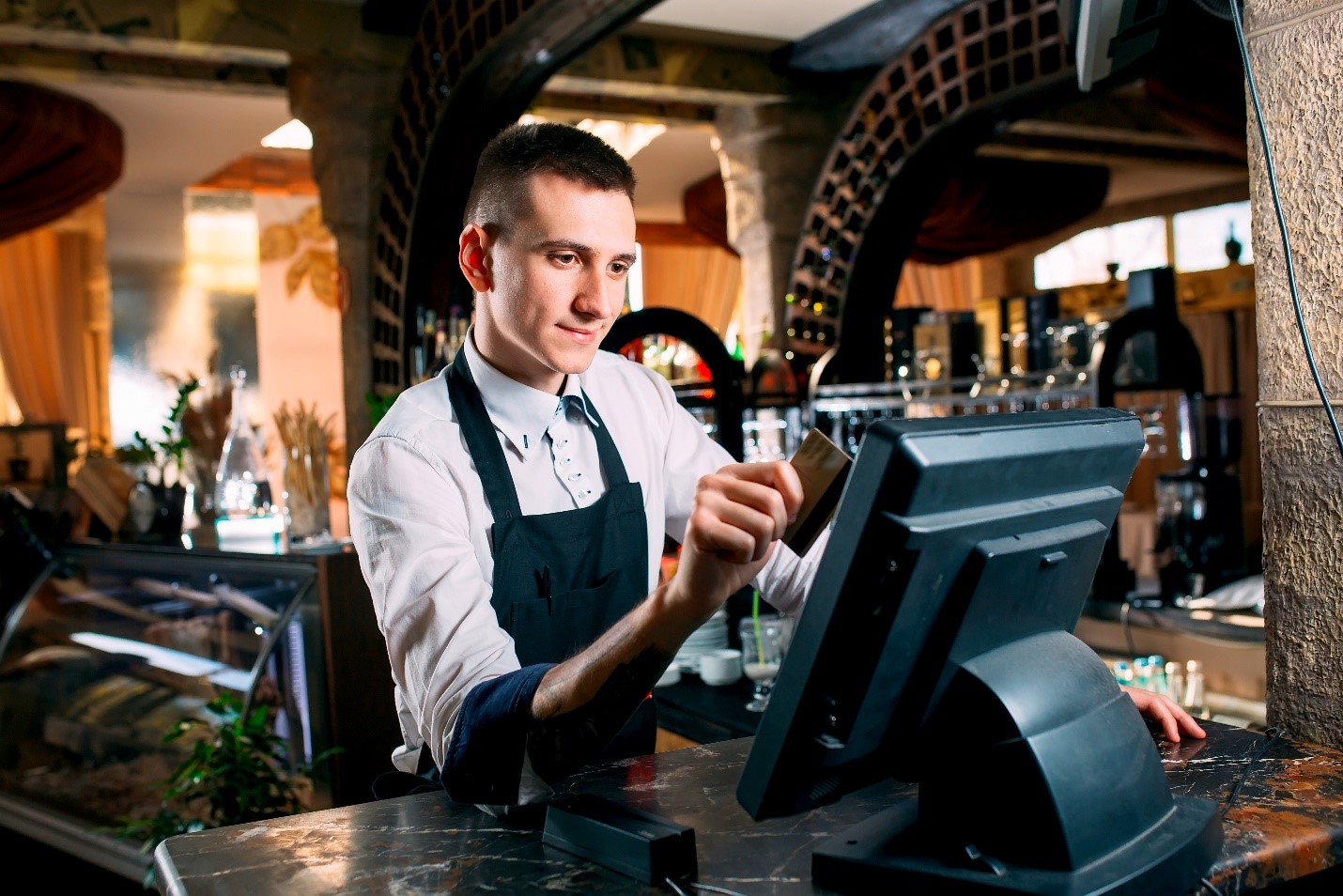At the core of each scrumptious meal that goes from the chef’s kitchen to your table is a flawless point of sale system.
Without hands exchanging money, you wouldn’t be able to satiate your hunger, or the restaurant to generate revenue for that matter.
To that effect, a point of sale system not only works to help customers dish out their wallets, but it effectively enables business scalability in a variety of other ways. Since this a food and restaurant management blog, we curate content to help startups grow from scratch. Some of the choices that you’ll make in your business will lead to your future failure or success for that matter.
To dart off in the right direction, we will have a little discussion about the basic idea of a point of sale system and then a couple of other things to demonstrate its effectiveness for your restaurant business.
What is a Point of Sale System for Restaurants?

If you were to pay attention to the expression: “point of sale”, you’d know that these systems help customers to pay money at the time of checkout. That’s the simple and most basic concept in layman terms.
However, not only has technology advanced since the inception of the very first POS system, the modern-day version of this swanky platform benefits businesses to the extra length.
We will talk about it in a bit.
The important thing to know is that beyond physical hardware, a point of sale system either works in combination with a cash register, barcode scanner, and other machinery, or it can operate as an independent unit with your digital points directing to the vendor’s business account.
So far so good?
Now, when we talk in the context of point of sale system for restaurants, or any other food business, we are looking at inventory management, employee tracking (*as in who made the sale), stock control for different food items, reporting, and 3rd party app integrations.
Point of Sale System Red Alert!
3 Mistakes That Dubai Restaurant Point of Sale System Owners Make
If you are pressed for time and don’t want to go through the entire post, here’s the main takeaway. Avoid these mistakes when you’re looking to get a fast food point of sale system for your restaurant.
Mistake#1 – Price Isn’t The Only Thing:
One of the main objectives of point of sale system for food businesses is scalability. In other words, the tenacity for meeting advanced business requirements, surplus customer flow, and high volume of incoming food orders are what an efficient point of sale system should be capable of.
Sadly, new restaurant owners in Dubai, MENAP, and all over the U.S. haven’t done much research before establishing their foothold in the market. Since these operators are running on a budget, they often spend too little on fast food point of sale systems with basic functionality and features.
In the long run, this type of pos system for restaurants could incur more costs because of its inability to meet large-scale business requirements. Therefore, do not settle for cheaper solutions when you’re looking to invest in kitchen tech from a long-term perspective.
Mistake # 2 – Restaurant and Fast Food Point of Sale Has a Hidden Cost:
For new startups, it is very easy to overlook and misunderstand the hidden cost factor associated with pos systems. Depending on the pos vendor, or the food aggregator’s pos service charges, hidden percentages are present in the form of training your staff members, regular pos software updates, bug fixing, and payment processing charges.
On a latter note, payment processing charges are applied whenever online/ real-life food order customers make payments through credit cards. To process this payment, pos vendors charge a percentage + base price on top of the transaction charges associated with each respective order.
As a smart restaurant owner, make sure you are covering all the bases by asking your pos vendor about percentages and the cost of maintaining the pos solution for years to come. Put yourself in a good spot by accounting for these expenses and making sure that they are kept to a bare minimum level.
Mistake #3 – Limited Customer Payment Options:
Since the rise of chip-based credit cards, the EMV liability policies call for additional percentages to be applied on card-based transactions. This factor, alone, is a bit of an alarming situation for restaurants that are not aware of these additional charges.
However, another pressing matter is the pos system for restaurant’s inability to process credit card payments. If you are looking to purchase a pos system through a food services aggregator, make sure that it has the latest technology to accommodate EMV card payments. The biggest benefit of these payments is the added level of security against fraudulent activities.
Customers are also interested in making fast food pos system payments through QR code scans, mobile apps, and vice versa. An ideal pos software should have all of the aforementioned solutions to scale business to the next level.
What Does a Point of Sale System Look Like?
That’s a fair question.
Without anything to show you, it’s all talk. So let’s see what a point of system may look like in terms of visual appearances.
At physical business establishments, POS systems are made up of small gadgets that could look like the following setup in the image below:
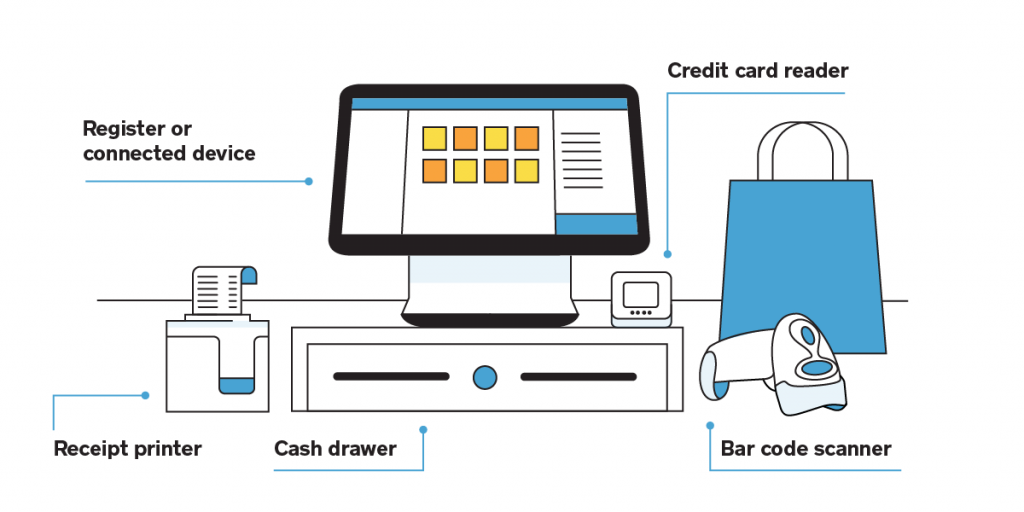
At its core, it’s not one hardware unit, but different gadgets working together to replicate the operation of a point of sale system.
Advanced POS systems can fit into the palm of your hand. In fact, a POS system is sometimes not even physical! It operates on software technology, where online merchants install the system into your computer, or a handheld tablet to navigate through a special interface for your employees.
Every time a customer rings in, point of sale operators, which are just plain old cashiers, tap the screen to finalize the details about your bill and order and let you pay via different payment options.
What is a Self Service Point of Sale System?
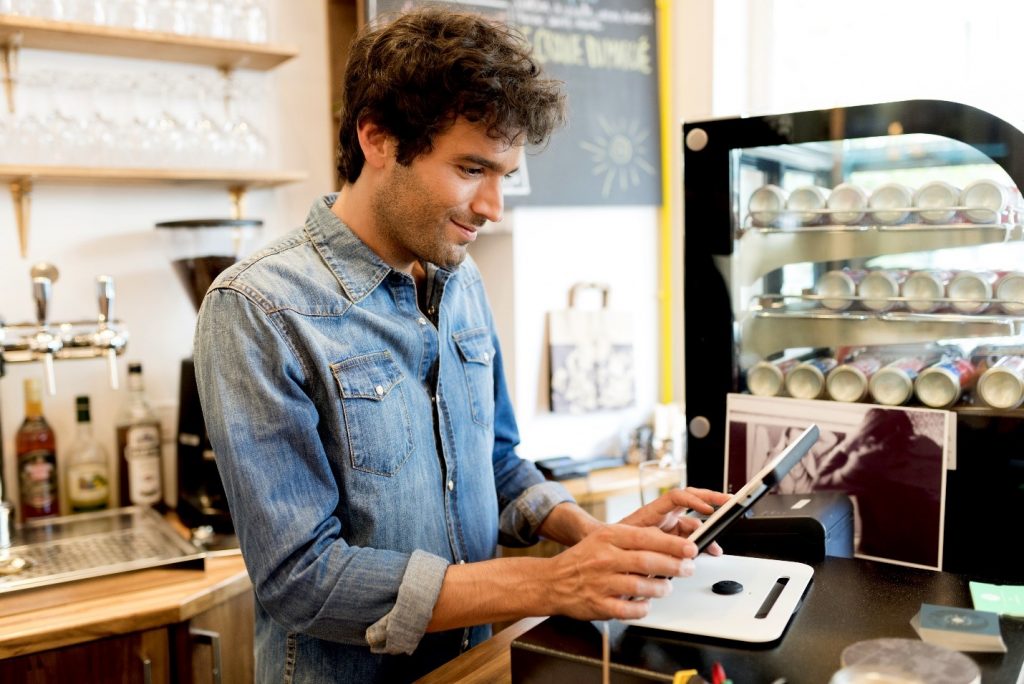
A self-service point of sale system is commonly used at restaurants, fast food joints, coffee shops, etc. The system is innovative in the sense that it enables customers to checkout on a whim by adding their items to the virtual cart and making payment through their cellphone or having them tap their card on the POS system screen.
That way, the restaurant staff’s time is freed up since they don’t have to appoint a dedicated individual to handle sale queries. Customers not only get to enjoy a lavish dine-in experience, but they can also make payments without fussing any of the staff members over it. In other words, self-service point of sale systems are truly a remarkable representation of fast-paced technology.
From customer retention point of view, these advanced POS facilitate businesses in adjusting their sales strategies by allowing people to have a dash of self-service experience.
However, there are rare cases when self-service POS and other manually operated POS lose connection to the payment servers. During such instances, restaurants have to manually intervene by taking cash payments as a substitute for these technology malfunction cases.
According to a recent survey conducted by TouchBistro and Oracle Co., it was reported that 50% of the customers are more likely to return to a restaurant because of the self-service point of sale system. The reason for such high retention percentage is associated with peace of mind and a sense of control that customers feel at the time of checking out.

Besides, the food industry is the kind of niche that thrives on repeat business opportunities. If you haven’t installed a self service POS or a simple point of sale system, you should do that as soon as possible.
How Does a Point of Sale System Work?
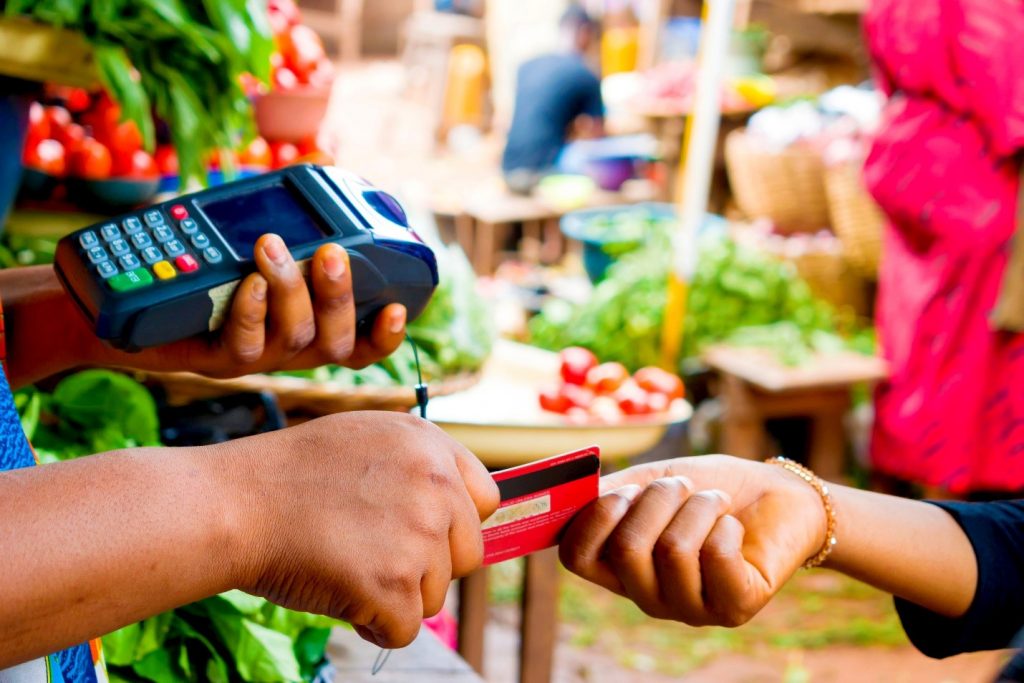
Whether it’s a food startup that you’re looking to scale or any other business, it is important to understand how the basic POS system works.
The simplest approach to understanding how a point of sale system works is by forgetting all about the advanced gimmickry for a second. A basic system, as we said earlier, offers a combination of hardware equipment and software to make payment a convenient ordeal for customers.
At the time of checkout, the vendor agent enters a list of shopping cart items by manually registering them into the POS system interface, or by automatically entering them via a barcode scanner. The payment amount is updated by the point of sale system software and the bill is generated for customers.
Advanced POS systems offer a touch screen that’s bundled with inventory items that customers can choose from. Once they have added everything to their cart, they can pay the amount against the subtotal through a Debit/ Credit Card, cellphone QR code interface, or by other alternative means.
Behind all this payment mechanism, there’s a dedicated thriving software that works to manage all the customer details, transactions, name of the employee who generated the invoice, and other data. Many food businesses, retailers, and restaurants sign an agreement with POS software vendors who charge a subscription fee for rendering their services.
Speaking of POS vendors, there are plenty of them available to all sorts of businesses in the market right now.
The important thing for you to know is that not all point of sale systems are alike. Basic systems may cost low, but they offer less functionality as compared to a fully-fledged advanced point of sale solution.
Some of the main benefits of a point of sale system that you need to keep in mind before signing any agreement with a POS vendor are highlighted below:
Invoice Generation & Sales Tracking:
Retail mart and restaurants have to handle multiple customers on any given day. Such a kind of hustle calls for a fast processing point of sale system that keeps tabs on every single sale transaction. Even if it’s a basic cash drawer and register tied to sale software, it should be able to automatically store sale data in a retrievable format.
Well Maintained Employee Tracking:
One of the most integral parts of an effective point of sale system is knowing the number of employees who processed payments at the pos terminal. This information is stored in a retrievable database, which comes in handy when the establishment is looking to incentivize employees’ sale performance and other objectives.
In addition to the many benefits of offering employee tracking, a point of sale system can also be programmed to store the number of employee hours, their pay and etc.
Stock Management:
Restaurant and self-service food joints often depend on a POS system that shows customers available food order menu items. This phenomenon, in other words, is called stock management that tallies the number of in-stock items against those that have run out. POS systems also send out alerts on depleted inventory so that retailers, restaurants, and cafes can update the stock without causing customers any hassle at the front end.
Targeted Marketing Strategies:
Of course, growth and scalability are some of the primary objectives of businesses on the rise. From marketing point of view, POS systems store valuable customer information, such as their spending habits on popular items, the maximum number of purchases made by someone, and vice versa.
This information can help vendors to run targeted marketed campaigns for such customers. High spending customers can be offered discounts and other loyalty-based incentives that not only make up for a delightful customer experience but also help the concerned business to focus on pain points that bring in more revenue.
According to stats churned up by ‘Inresto Co’, almost 78% of restaurant business owners rely on POS solutions because of the mobility aspect. The upgraded technology braces businesses with an agile approach to completing milestones where everything is stored and maintained in a digital format.
In other words, going paperless has revolutionized the way fast pacing food businesses operate their daily rituals.
The Do’s and Don’ts of Running Point of Sale System for Restaurants:
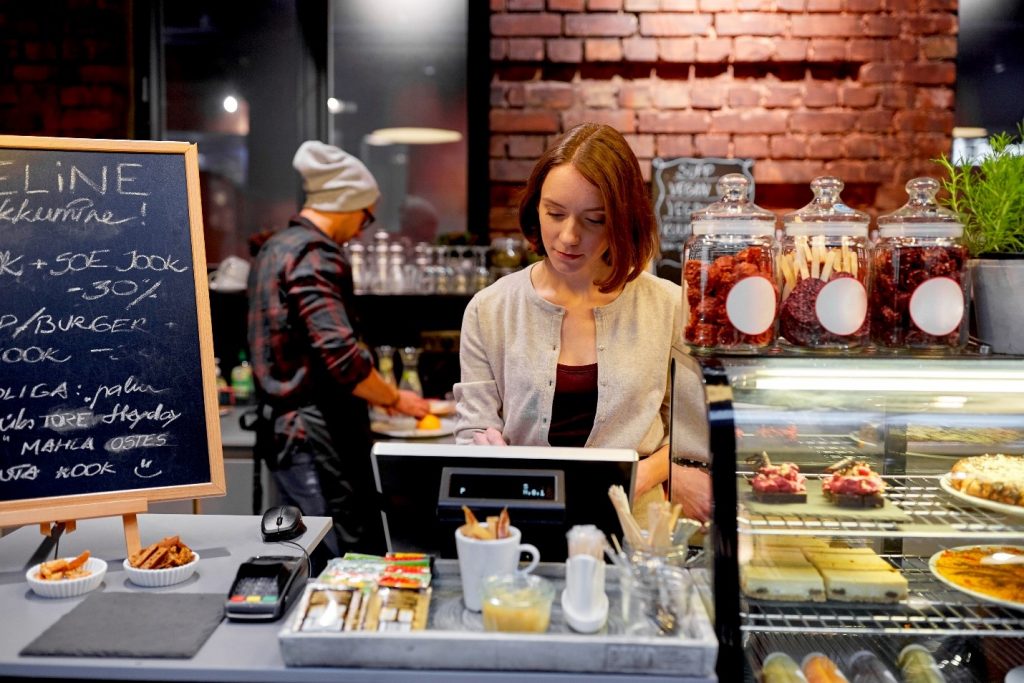
Are you a startup looking to integrate point of sale solutions in your food business? If so, here are some of the basic level do’s and don’ts that you need to be aware of.
A POS System is Not for Every Food Business Out There:
Although convenience is a huge factor, any advanced-level POS system requires payments to be made to the software vendor. Some vendors charge an upfront fee, while other companies offer POS solutions through a SaaS model working on monthly subscription plans.
If you are just about to get started, you will need all the additional resources without overspending. Therefore, your food startup can hold back on integrating a POS system right away. Alternatively, you can manage payment, sale, and revenue-related information through simple computer programs that require a bit of manual work.
Compare Your Business Requirements Against POS Features:
Before paying an upfront cost for a point-of-sale system installation, it is best to do a bit of due diligence.
In that sense, instead of signing up with a vendor on impulse, see what other merchants are offering. Many times, food service merchants bill restaurants on the basis of a flat commission percentage. This percentage is applied on all incoming food menu orders, regardless of the order size, etc.
In such a case, especially if you own a small scale food business, you have a high chance of running dry before the end of your fiscal year.
For startups, we recommend partnering up with foodservice partners, such as Blink Co. The company braces restaurants, retailers, and food chains with a robust technology that offers multiple integrated solutions, marketing tools, branded mobile + desktop websites, Microsoft Power Bi reports and much more.
The best thing about Blink Co. is its payment model that requires a nominal monthly subscription fee. Without percentages and commissions, you can streamline your investment in expanding business instead of worrying about keeping up with food service merchant tabs.
Check out our Blink for Retailers and Blink for Restaurants Webpage for additional information on the get-go.
UI & UX Experience:
Don’t go for a point of sale system that has a complex interface. Your restaurant staff can be trained to manage your POS software, but customers are nearly impossible to manage.
Especially, if you are looking to set up a self service point of sale system for your food joint, go for a program with an intuitive menu, easy-to-navigate interface, and other perks. Often time, it’s the user experience that matters a lot more into retaining customers as opposed to relying on complex software with hidden features.
Keep your POS program simple, effective, and to the point.
Buying Low-Cost Point of Sale System Might be Ineffective:
Signing up with a food services merchant for a POS system is more of a long-term investment agreement.
Are you willing to settle for a low-cost POS system that doesn’t scale with your business as it grows and expands in near future? Experts suggest that during the Post Pandemic phase, food businesses oversaw a growth percentage of 160% in online food order trends.
Experts from BFSI, predict that the online food ordering frenzy will continue to escalate long after COVID because of the ease of access that restaurant point of sale systems offer. Customers prefer cashless and online payments through a fuss-free payment processing portal.
Sooner or later, your business will expand. The question is: will your low-cost point of sale system continue to suffice against a high number of online customers? Think about it, and make a well-informed decision to avoid regression from kicking in.
The Need of the Hour:
Due to challenges posed by conventional payment processing platforms, restaurants, food marts, and retailers are busy making the transition to point of sale systems installation. These systems are fast, reliable, and super effective from different aspects.
Having said that, we have discussed plenty of benefits of a point of sale system for any business to have. If you still think that we failed to mention something important, or insightful, feel free to share your thoughts in the comments section below.
We look forward to hearing from you.
Related Articles:
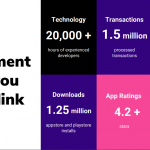 Our Guide to the Best Restaurant Management Software & What to Consider
Our Guide to the Best Restaurant Management Software & What to Consider
 Tips for Optimizing Your Restaurant Website
Tips for Optimizing Your Restaurant Website
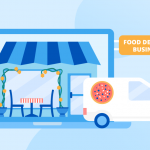 Everything You Need to Know About Starting an Online Food Delivery Business
Everything You Need to Know About Starting an Online Food Delivery Business
 Get to Know the 9 Best Pizza Places in Islamabad
Get to Know the 9 Best Pizza Places in Islamabad
 Which Restaurant Management System to opt-for in Saudi Arabia
Which Restaurant Management System to opt-for in Saudi Arabia
